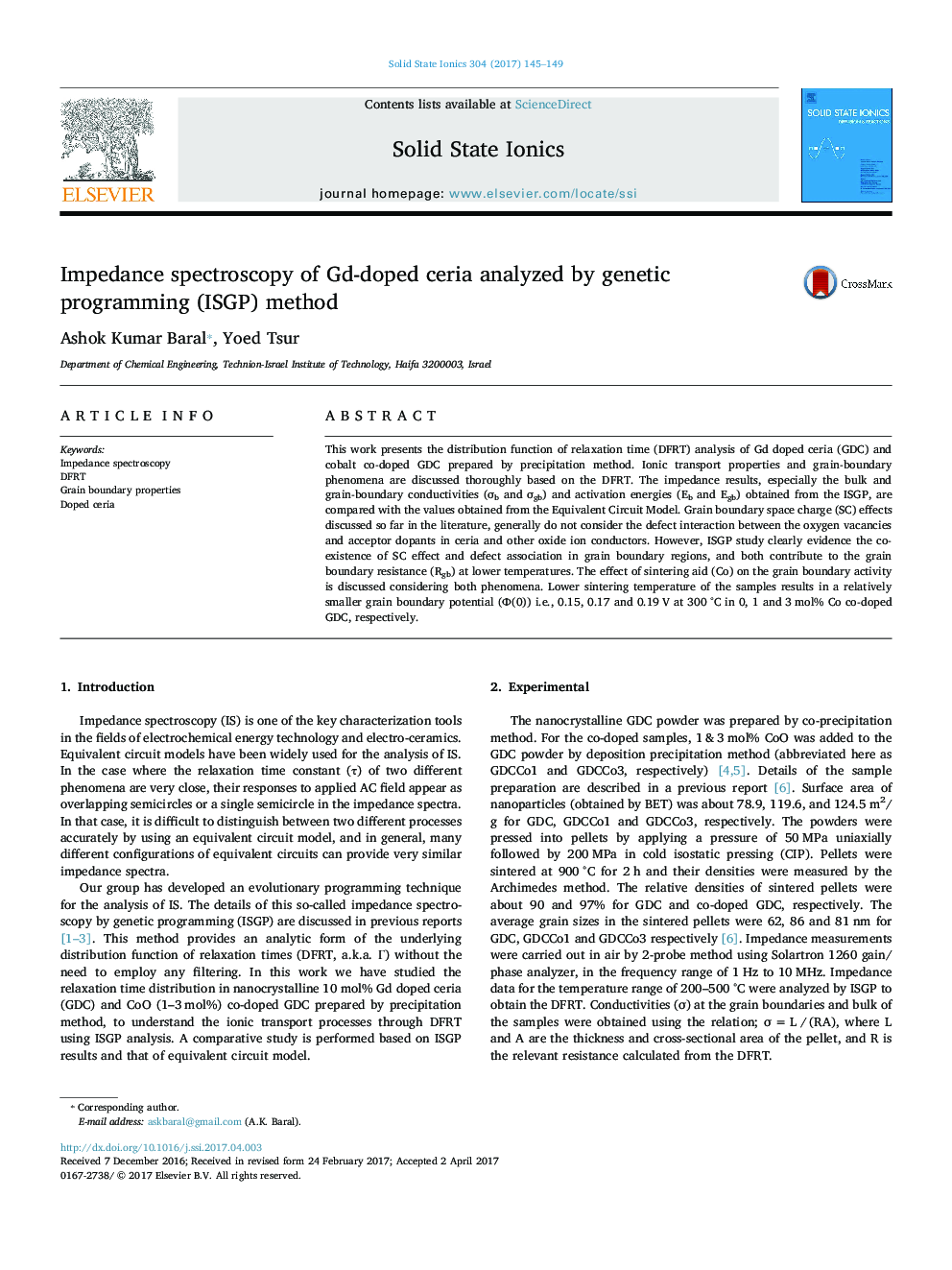| Article ID | Journal | Published Year | Pages | File Type |
|---|---|---|---|---|
| 5150389 | Solid State Ionics | 2017 | 5 Pages |
Abstract
This work presents the distribution function of relaxation time (DFRT) analysis of Gd doped ceria (GDC) and cobalt co-doped GDC prepared by precipitation method. Ionic transport properties and grain-boundary phenomena are discussed thoroughly based on the DFRT. The impedance results, especially the bulk and grain-boundary conductivities (Ïb and Ïgb) and activation energies (Eb and Egb) obtained from the ISGP, are compared with the values obtained from the Equivalent Circuit Model. Grain boundary space charge (SC) effects discussed so far in the literature, generally do not consider the defect interaction between the oxygen vacancies and acceptor dopants in ceria and other oxide ion conductors. However, ISGP study clearly evidence the co-existence of SC effect and defect association in grain boundary regions, and both contribute to the grain boundary resistance (Rgb) at lower temperatures. The effect of sintering aid (Co) on the grain boundary activity is discussed considering both phenomena. Lower sintering temperature of the samples results in a relatively smaller grain boundary potential (Ф(0)) i.e., 0.15, 0.17 and 0.19 V at 300 °C in 0, 1 and 3 mol% Co co-doped GDC, respectively.
Keywords
Related Topics
Physical Sciences and Engineering
Chemistry
Electrochemistry
Authors
Ashok Kumar Baral, Yoed Tsur,
